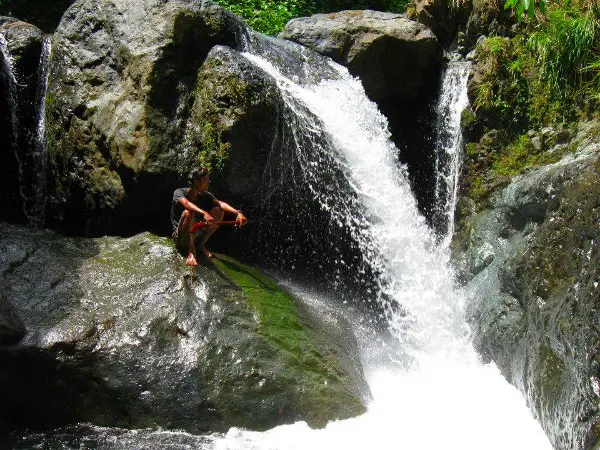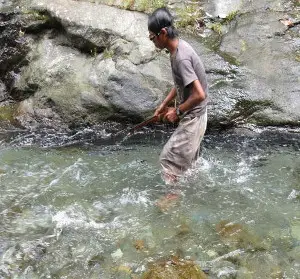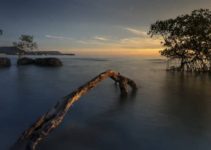Without ecosystem services provided by the environment, human-beings cannot survive nor exist. Human-environment interaction is common to us. It is the usual scene every time we, humans, wake up in the morning and continue the routine of living.
For a moment, can you describe the details if you will be asked, what are the interactions between an individual and his environment? By posing for a while and observing what is really happening, I have found that the relations between human-beings and environment are complex.
In this article, we will see the reality of complex relations between ecosystem and human-beings within one of the remote communities in the island of Palawan that we have visited.
Human-environment interaction are complex adaptive systems. It is complex because ecosystem and social system have many parts that are interconnected and interdependent with each other. Adaptive since it has feedback structures that promote survival in a continuously changing environment.
Humans are highly dependent on the environment. Ecosystem services such as food, water, clothing, shelter, timber and many other resources are essential for human-beings survival. By using these resources, people affect the environment in a lot of ways. Humans modify the existing ecosystem for their purposes and benefits as well as develop new strategies that seem to be more effective in serving their needs.
The type of society strongly affects the attitude and behavior of people towards nature, and therefore brings impacts on ecosystem. Some of the significant characteristics include population size, social organization, knowledge, culture, belief and many more. Values, knowledge and cultures strongly influence peoples’ “view and principles of life” and subsequently define the way people act. The choice of possible actions is then limited by the available resources and technologies.
The Pala’wans – Environment Interaction
The Pala’wan tribe who have settled in the southern part of Palawan island have simple way of living. They are highly dependent on the availability of natural resources within their areas. The practice of traditional agriculture like slash-and-burn farming is one of their ways to produce staple food such as rice, cassava and other endemic crops. They also know unique strategies in fishing and hunting of several wild animals. For thousands of years, their lives are linked with the environment. Their rich traditional knowledge reflects and embodies a cultural and spiritual relationship with the land, river and wildlife.
The selected photo below shows how Pala’wans are connected with the environment. It was taken in May 2013 when my dad and I, together with my group mates in research study in college, visited Sitio Bayabas, Barangay Bunog, Rizal, Palawan. The site is located within Mt. Mantalingahan, one of the protected areas in the province of Palawan.
The site is considered as one of the sacred places of the Pala’wans. Thus, only limited people are allowed to visit the area. And we are fortunate to have that opportunity! Once more, I’m so blessed to witness these great creations of the Lord.

The Aesthetic Value of the Site
The aesthetic view of the place is like a paradise. You are free to hear the natural sound of murmuring water from a waterfall that continuously flows and rushes within the blocks of big rocks; it has crystal clear running waters with bluish and greenish color in some parts that seems like a confined pool with fresh and cold water; the fresh gentle breeze that touches your skin with whispering sounds around your ear; the sound of chirping birds and other insects around; as well as the views of mountains, really gives relaxation, peace of mind, thanksgiving and enjoyment to human-being like me. These natural services provided by the ecosystem cannot be compared to any man-made structure.
The Interrelationship of Each System
By looking deeper into the relationship of every factor present in the area, other interactions were recorded. These include the different biogeochemical cycles that sustain the homeostasis of the environment. For instance, sun is the critical source of energy for every living organism, both biotic and abiotic factors. Without it, no one can exist, including human-beings.
The communities benefit from the oxygen produced by vegetation in the area (including us who visited them as well as in a global aspect for it cannot be confined in an area). On the other hand, plants use the carbon dioxide released by humans and animals as well as other organisms that release the same, for the process of photosynthesis to take place.
Direct Benefits Obtained in the site by the Community
Aside from the indirect value of the resources in the area, the water source supplies the needs of the Pala’wans for cooking, cleaning, bathing or swimming and other purposes. Moreover, hunting of wild animals, fishes, shrimps and other crustaceans is one of the major sources of food of the Pala’wan. The provision of these resources support the lives of the tribe. They use arrows in hunting fishes or shrimps. What is so good about them in gathering of resources is they observe proper utilization.
During the trek, Rowel, a Pala’wan, tried to hunt some shrimps for lunch. However, during those times, shrimps are not fully grown yet; thus, he did not collect any.
The Pala’wan also believe that they will suffer in the near future if the available resources are exploited. Furthermore, they believe that every place is guarded by gods and goddesses who take care of the area and they will be punished once they over-use the resources.

Intangible institutions like these lead to environmental conservation. Beliefs, cultures and traditional knowledge drive their attitudes and values toward their interaction with natural ecosystem.
Human-environment interaction is observed in every action that we do. Human activities increase or mitigate pressure on the environment. The driving forces which initiate human activities are mainly socio-economic and socio-cultural forces.
Thus, it is very important that we examine the consequences of our actions before we start to act. Consider the impacts that it will bring to ecosystem for we have a very complex system – a system that is interrelated to one another in which an action in one factor is connected to the rest of ecosystem.
©2015 April 18 Shellemai A. Roa




Good to know that. Thanks! 🙂
Thanks so much! 🙂
Thanks!
Glad to know that! Thank you. 🙂